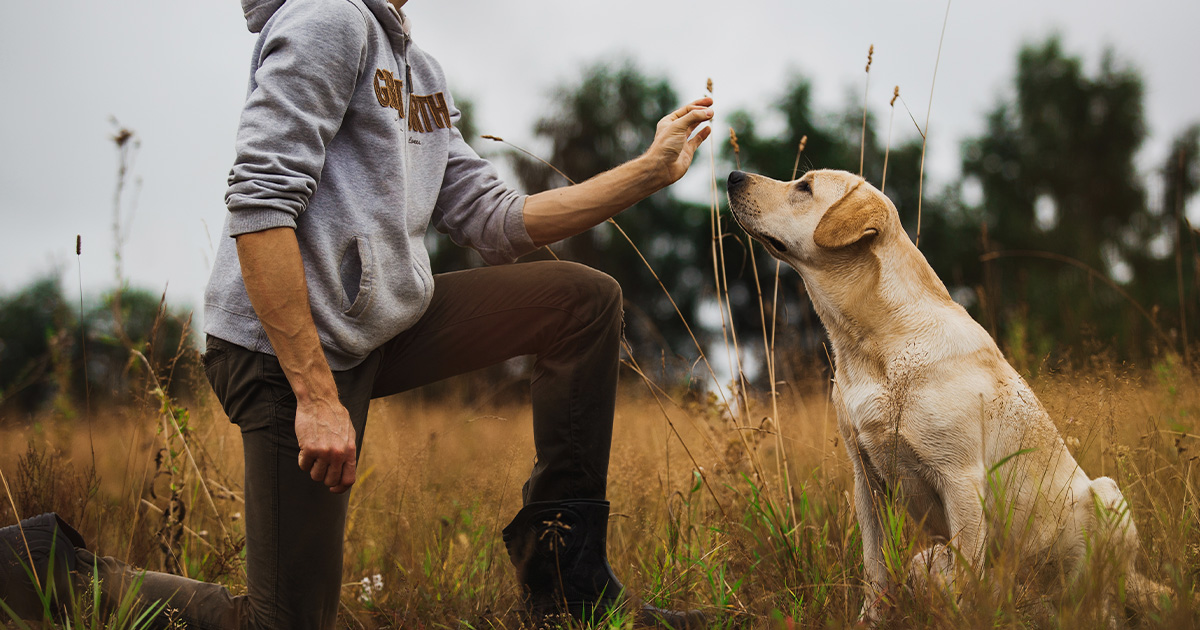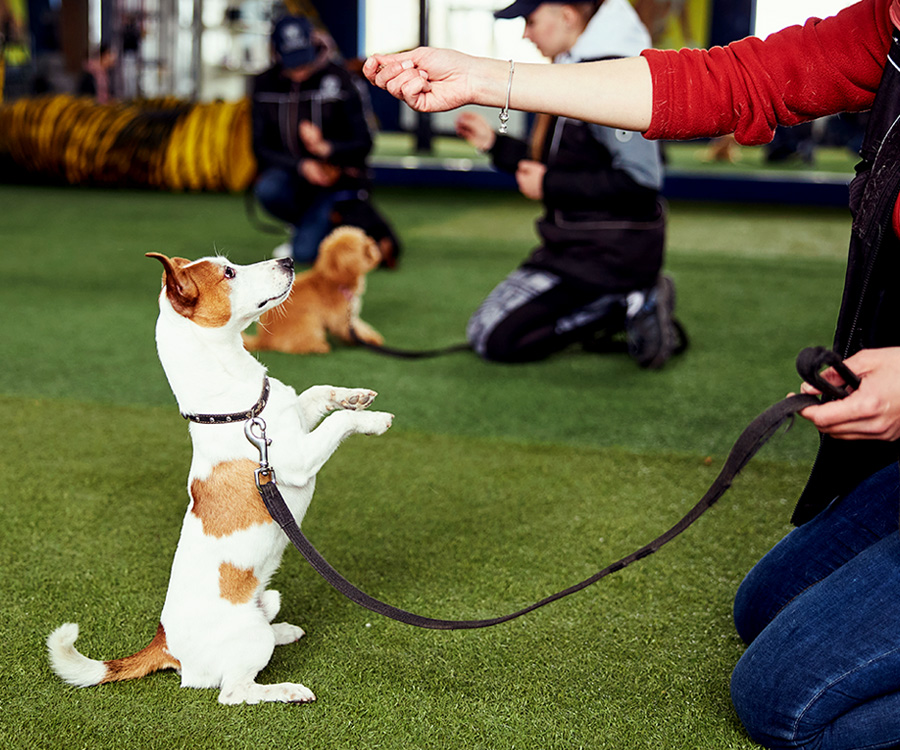The Ultimate Guide to Pet Training: Change Your Pet's Actions
Effective pet dog training is important for promoting a harmonious connection in between animals and their proprietors. This guide not only aims to outfit you with the required devices to change your pet's habits yet also invites you to discover exactly how these foundational ideas can lead to a much deeper connection with your animal.
Recognizing Pet Habits
Understanding canine habits is necessary for effective training and a harmonious relationship between canines and their proprietors. A canine's habits is affected by a mix of genes, atmosphere, and experiences. Dog training. Recognizing these aspects permits proprietors to customize their training approaches to fulfill the specific needs of their family pets
Pet dogs interact mostly with body language, articulations, and faces. For instance, a wagging tail can indicate exhilaration or happiness, while a put tail may indicate worry or submission. Observing these hints allows owners to respond appropriately, strengthening positive actions and addressing adverse ones properly.
In addition, comprehending the social structure of pet dogs can offer understandings right into their behavior. Pets are pack animals, and they grow in a structured setting. Developing regular guidelines and clear boundaries can avoid confusion and advertise a sense of protection.
Furthermore, recognizing the natural impulses of dogs, such as the desire to dig or chase after, is essential. These impulses can be rerouted through proper outlets, such as play or workout. By comprehensively comprehending these behavior aspects, owners can foster a positive training experience, inevitably leading to a obedient and well-adjusted canine friend.
Important Educating Strategies
Effective canine training counts on a selection of important methods that can dramatically enhance the knowing procedure for both the pet dog and the proprietor. One fundamental strategy is favorable reinforcement, which involves gratifying desirable behaviors with deals with, appreciation, or play. This approach urges pets to duplicate the habits that cause favorable end results, cultivating a trusting relationship between the animal and owner.
Another key strategy is uniformity in expectations and commands. Making use of the very same spoken signs and hand signals aids the pet recognize what is called for, lowering confusion and advertising quicker discovering. Furthermore, establishing clear boundaries and rules is vital for effective interaction.
Socializing is likewise a necessary element of training. Revealing pets to various atmospheres, people, and various other pets aids them develop ideal social skills and reduces anxiety in strange situations.
Lastly, perseverance and timing are crucial. Training sessions should be quick but constant, making sure that the dog remains engaged and responsive. By employing these crucial methods, owners can create a structured and positive training experience that advertises great behavior and reinforces the bond with their canine companions.
Developing a Training Set Up
How can a well-structured training timetable boost a pet dog's learning experience? A training routine provides consistency, making certain that canines obtain regular, concentrated instruction. This predictability aids pet dogs understand what is expected of them, enhancing their understanding and allowing for far better retention of actions and commands.
When developing a training timetable, it is necessary to consider the canine's age, type, and individual character. Youthful puppies may take advantage of much shorter, much more regular sessions, while grown-up pets may love longer, much less constant training periods. Integrating a range of tasks can additionally keep the sessions engaging, protecting company website against boredom and promoting interest for discovering.
In addition, scheduling training sessions at certain times of the day can aid strengthen a regimen. Matching training with everyday strolls or play can produce a favorable organization with discovering. It is additionally crucial to include time for reinforcement, such as treats or appreciation, to reward desired behaviors promptly.
Lastly, flexibility is key. While consistency is vital, being adaptable to the dog's state of mind or power degree can boost their learning experience. A well-crafted training timetable inevitably lays the structure for efficient interaction and a stronger bond between the pet and proprietor.
Typical Training Challenges
Despite having a well-structured training schedule, dog proprietors commonly come across different difficulties during the training process. One usual problem is disparity in cues and commands. When numerous member of the family use various terms or tones, a canine may become overwhelmed, impeding its ability to find out efficiently.
An additional frequent obstacle is diversion. Dog training. Dogs are normally curious animals, and outside stimulations such as other pets, sounds, or individuals can divert their i loved this interest during training sessions. This calls for owners to develop a controlled setting or slowly introduce disturbances to strengthen emphasis
Additionally, varying energy degrees can impact training results. High-energy dogs may struggle to settle and focus, while more laid-back types might require extra inspiration to engage. Customizing the training approach to fit the private pet's character is essential for success.

Building a Strong Bond
A strong bond between a pet dog and its proprietor is crucial for effective training and total well-being. Dog training. This relationship fosters count on, which is vital for efficient interaction throughout the training procedure. When a pet dog really feels connected and protected to its owner, it is most likely to respond positively to commands and cues
To develop this bond, consistency is essential. Establishing a routine that includes regular feeding, exercise, and training sessions aids develop a feeling of security. Furthermore, favorable support strategies, such as deals with, praise, and play, reinforce desired actions while enhancing the emotional connection.
Socialization is another vital facet of bond-building. Exposing your canine to different environments, individuals, and various other animals helps them really feel a lot more comfortable and confident, improving the bond with their proprietor. Taking part in activities with each other, such as strolling, playing fetch, or taking part in obedience training, advertises teamwork and common pleasure.
Conclusion

Comprehending pet behavior is crucial for effective training and a harmonious partnership between pets and their owners.Efficient pet training relies on a range of crucial techniques that can dramatically improve the discovering procedure for both the owner and the pet dog.Regardless of having a well-structured training routine, canine proprietors typically experience different obstacles during the training process.In verdict, reliable dog training depends on a thorough understanding of canine actions, the application of important methods, and the establishment of a structured training routine. By highlighting favorable support and consistency, pet dog owners can substantially improve their pet dogs' actions, inevitably ensuring a harmonious connection and promoting the wellness of both the pet dog and its setting.
Comments on “Dog Training Strategies to Solve Common Behavior Problems”